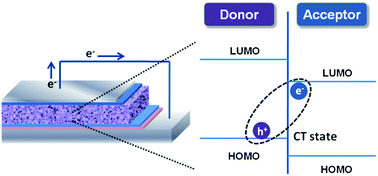Charge transfer state in highly efficient polymer–fullerene bulk heterojunction solar cells
Abstract
In recent years, steady improvements in organic photovoltaic (OPV) performance have been reported with power conversion efficiency (PCE) reaching 9%. Despite this rapid improvement, the mechanisms limiting the existing performance are not completely known; therefore a better understanding of the loss processes is necessary. In this respect a crucial role may be played by the charge transfer (CT) state, which is the intermediate state between the excitons and the fully dissociated charges. In this review article we outline the dynamics of this intermediate state in light of their influence on the photovoltaic performance, with central emphasis on highly efficient

- This article is part of the themed collection: Organic optoelectronic materials

 Please wait while we load your content...
Please wait while we load your content...